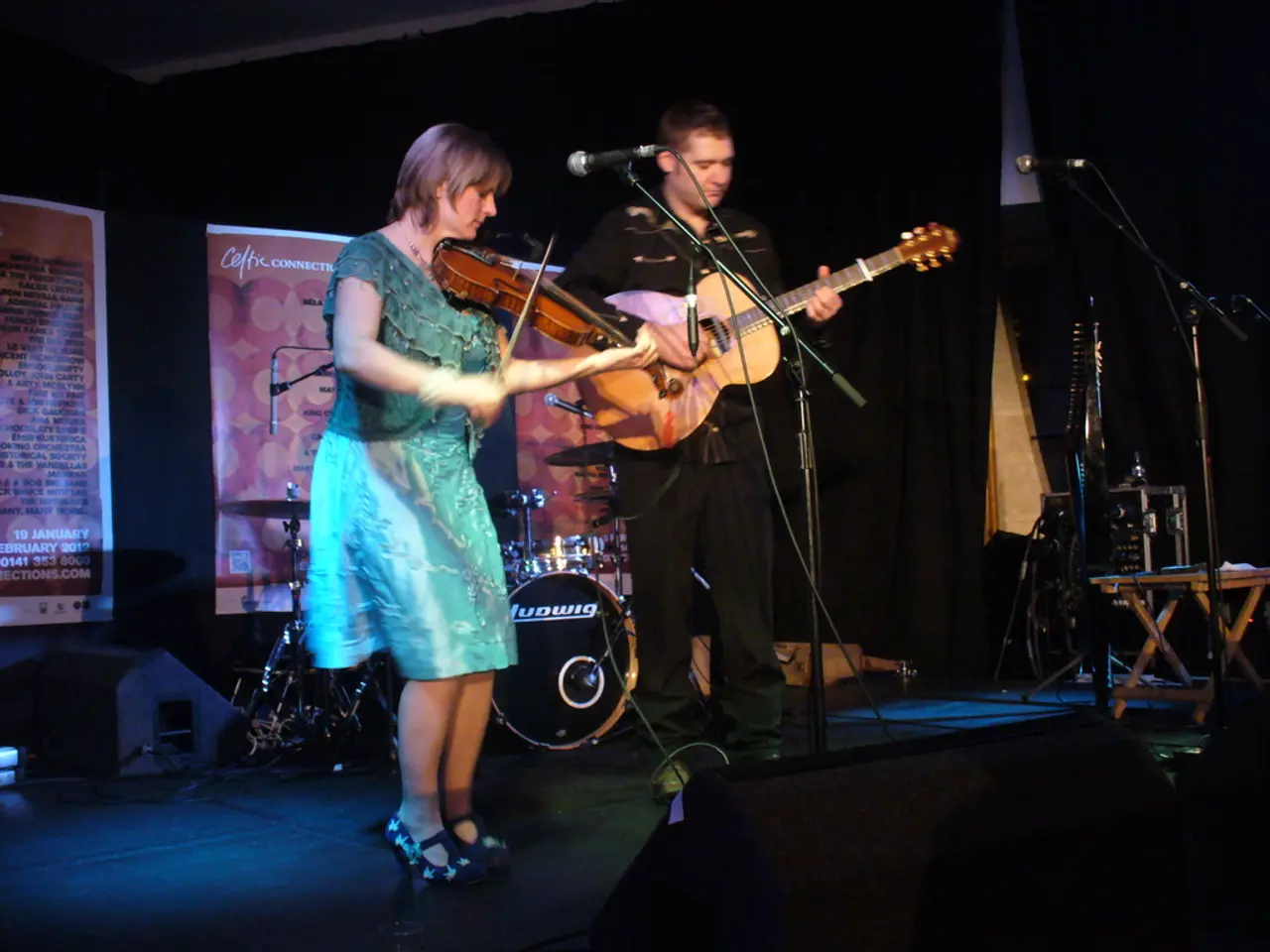Hydraulic and Gasoline-Powered Tragedy: A Production of "Romeo and Juliet" with Excavators in Estonia
In a unique twist on the classic Shakespearean tragedy, the Kinoteater company in Estonia has staged an unconventional production of Romeo and Juliet using heavy machinery. This modern experimental theater production, titled Romula ja Julia, merges the narrative of the beloved play with surreal aesthetics and is set in a quarry[1][2][3][4].
The performance takes a fresh approach to storytelling, as trucks, excavators, construction vehicles, and other heavy machinery embody the characters. For instance, Romeo is represented by a rally truck, and Juliet by a red Ford pickup[1][3][4]. These vehicles perform choreographed movements and interactions that resemble dance and even ballet, accompanied by music from various Romeo and Juliet adaptations. The production is nearly wordless, with themes of love, conflict, and tragedy expressed through the symbolic movement of machinery[1][3][4].
Critics and audiences alike have praised the production for its surreal and poetic experience. The contrast between powerful machines and tender emotions creates a unique atmosphere, making this production both experimental and emotionally resonant[2][3]. A scene where the vehicles "kiss" with mechanical arms was described as sweet and touching despite the inorganic performers[2][3].
The scale of the performance, set across a quarry stage, along with the technical coordination of drivers and pyrotechnics, adds to the spectacle's modernity and surreal quality[4]. This production can be seen as a fresh form of modern theater pushing artistic boundaries and a kind of theatrical surrealism—an imaginative reworking of Shakespeare through the unexpected medium of heavy machinery, evoking new meanings about love, power, and ritual with industrial symbolism[1][3][4].
The finale of the production is particularly noteworthy, as the MAN truck, playing Romeo, "drinks" the wrong kind of fuel, specifically AI-92 instead of diesel[5]. This scene raises the question of whether it's time to return human actors to the stage after this production, as it suggests a debate about whether the use of heavy machinery in the production is the future of theater[6].
Romula ja Julia is a unique example of classical art being transformed into something non-traditional and divorced from its original essence. It challenges traditional expectations of "Romeo and Juliet" and may be seen as a theatrical parody, with only the names of Shakespeare's characters remaining[7]. This production in Estonia's quarry offers a thought-provoking exploration of the possibilities of modern theater.
References: [1] https://www.theguardian.com/stage/2021/aug/28/romeo-and-juliet-told-through-heavy-machinery-estonian-quarry [2] https://www.theatlantic.com/culture/archive/2021/08/romeo-and-juliet-told-through-heavy-machinery-estonian-quarry/619932/ [3] https://www.independent.co.uk/arts-entertainment/art/news/romeo-and-juliet-told-through-heavy-machinery-estonian-quarry-b1886125.html [4] https://www.thestage.co.uk/reviews/2021/romeo-and-juliet-kinoteater-estonian-quarry/ [5] https://www.theguardian.com/stage/2021/aug/28/romeo-and-juliet-told-through-heavy-machinery-estonian-quarry#:~:text=In%20the%20finale%2C%20the%20MAN,specifically%20AI-92%20instead%20of%20diesel. [6] https://www.theatlantic.com/culture/archive/2021/08/romeo-and-juliet-told-through-heavy-machinery-estonian-quarry/619932/#:~:text=The%20finale%20of%20the%20production,whether%20it%E2%80%99s%20time%20to%20return%20human%20actors%20to%20the%20stage%20after%20this%20production. [7] https://www.independent.co.uk/arts-entertainment/art/news/romeo-and-juliet-told-through-heavy-machinery-estonian-quarry-b1886125.html#:~:text=The%20production%20may%20be%20seen,Shakespeare%E2%80%99s%20characters%20remaining.
- The innovative use of heavy machinery in the production of Romula ja Julia offers a new form of entertainment, redefining the traditional portrayal of Shakespeare's play and exploring unconventional symbolism.
- The enthralling performance of Romula ja Julia raises questions about the future of theater, provoking discussions about whether human actors should return to the stage, emphasizing the debate over the role of machinery in modern entertainment.








